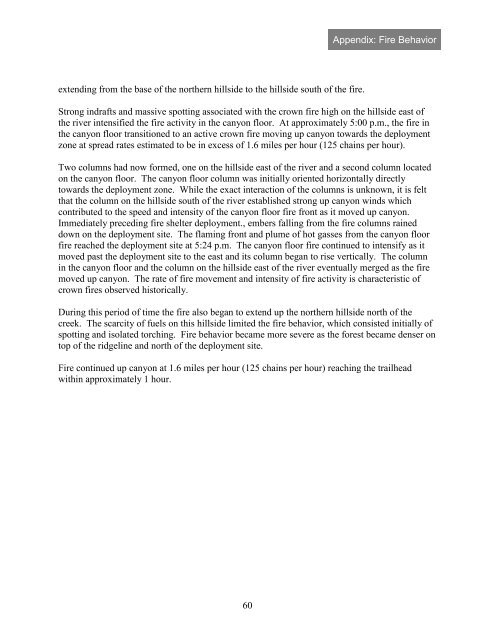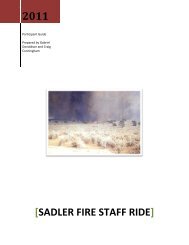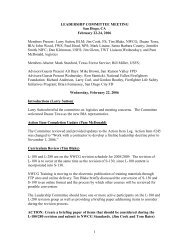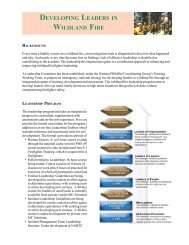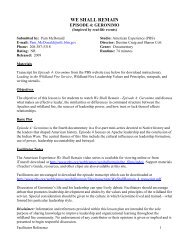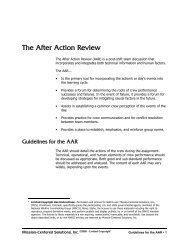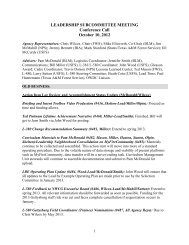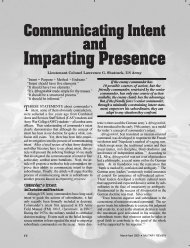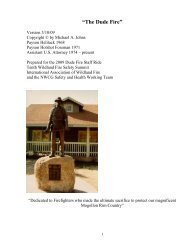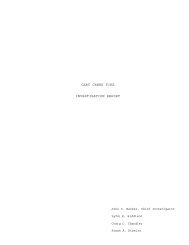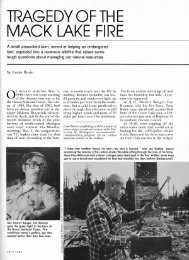Thirtymile Fire - USDA Forest Service
Thirtymile Fire - USDA Forest Service
Thirtymile Fire - USDA Forest Service
You also want an ePaper? Increase the reach of your titles
YUMPU automatically turns print PDFs into web optimized ePapers that Google loves.
Appendix: <strong>Fire</strong> Behavior<br />
extending from the base of the northern hillside to the hillside south of the fire.<br />
Strong indrafts and massive spotting associated with the crown fire high on the hillside east of<br />
the river intensified the fire activity in the canyon floor. At approximately 5:00 p.m., the fire in<br />
the canyon floor transitioned to an active crown fire moving up canyon towards the deployment<br />
zone at spread rates estimated to be in excess of 1.6 miles per hour (125 chains per hour).<br />
Two columns had now formed, one on the hillside east of the river and a second column located<br />
on the canyon floor. The canyon floor column was initially oriented horizontally directly<br />
towards the deployment zone. While the exact interaction of the columns is unknown, it is felt<br />
that the column on the hillside south of the river established strong up canyon winds which<br />
contributed to the speed and intensity of the canyon floor fire front as it moved up canyon.<br />
Immediately preceding fire shelter deployment., embers falling from the fire columns rained<br />
down on the deployment site. The flaming front and plume of hot gasses from the canyon floor<br />
fire reached the deployment site at 5:24 p.m. The canyon floor fire continued to intensify as it<br />
moved past the deployment site to the east and its column began to rise vertically. The column<br />
in the canyon floor and the column on the hillside east of the river eventually merged as the fire<br />
moved up canyon. The rate of fire movement and intensity of fire activity is characteristic of<br />
crown fires observed historically.<br />
During this period of time the fire also began to extend up the northern hillside north of the<br />
creek. The scarcity of fuels on this hillside limited the fire behavior, which consisted initially of<br />
spotting and isolated torching. <strong>Fire</strong> behavior became more severe as the forest became denser on<br />
top of the ridgeline and north of the deployment site.<br />
<strong>Fire</strong> continued up canyon at 1.6 miles per hour (125 chains per hour) reaching the trailhead<br />
within approximately 1 hour.<br />
60


